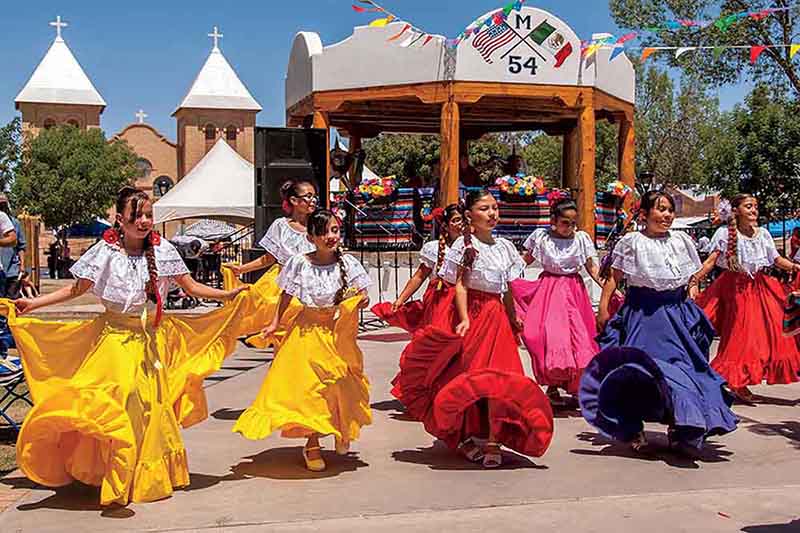
Source: Photo Courtesy of iStock/SWInsider
Have you ever wondered how New Mexico got its name? If you’re thinking like most of us, “after Mexico, of course,” you’d be wrong. How can that be? For one reason, New Mexico was named New Mexico before Mexico was named Mexico! So, what’s the real reason behind the name? In just a bit, we’ll explain that, along with other intriguing facts about New Mexico’s unique past that make it so abundant in Hispanic culture.
What’s fantastic is that you don’t always have to travel across international borders to gain insight into Hispanic culture and history, which is as rich as it is diverse. You can explore it right here in the U.S!
In Part 1 of this series, we’re exploring New Mexico. Long before New Mexico was one of the United States of America, it was populated by explorers from Spain (“Spaniards”) who colonized the region and other areas of North America, bringing the Spanish language to the North American continent. This dialect of Spanish from Spain is referred to as Castilian Spanish.
These Spanish origins can still be seen in New Mexico to this day through architecture, food, and historical sites and are a great way to experience Hispanic culture with your kids and students. But that’s not all the change that New Mexico went through to become the culturally rich state it is now. Read on to learn a bit of how New Mexico came to be New Mexico, how the influences of its multiple owners remain throughout its modern-day culture, and how to experience Hispanic culture in New Mexico today.
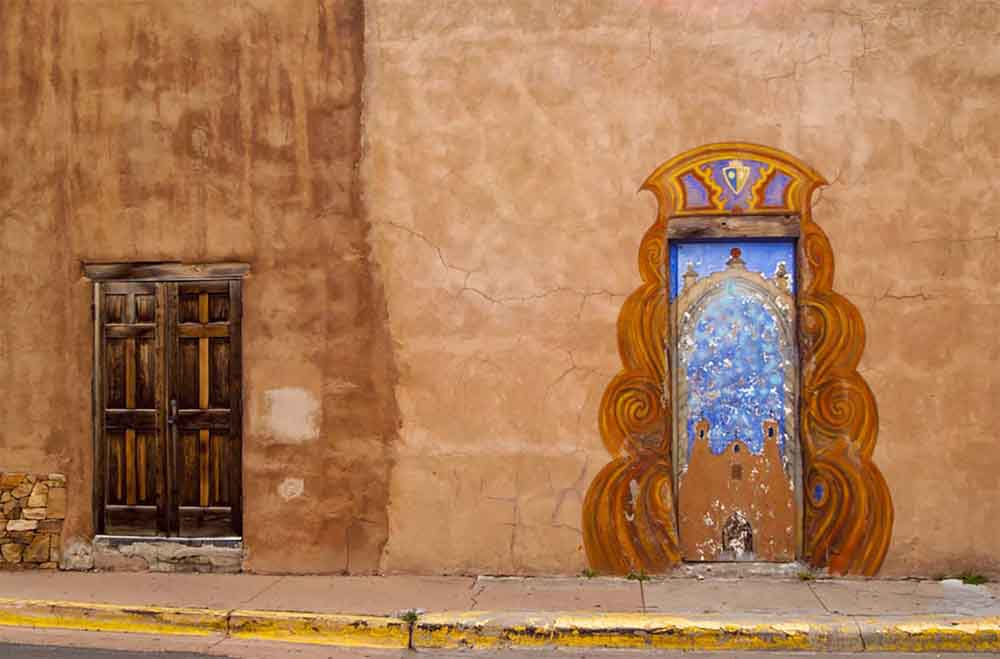
Source: By Graeme Maclean from Glasgow
Spanish Origins in New Mexico Culture
We mentioned above that New Mexico wasn’t named after Mexico. So, where did its name come from? Well, conquerors from Spain arrived early on and claimed lands, including what is now known as New Mexico. So, then why didn’t the Spaniards call these lands “New Spain”? After all, naming lands after a conqueror’s homeland was a common practice. Can you guess why?

Source: By José María Velasco Gómez Obregón
The fact is, when the Spanish colonists came to settle in New Mexico, they originally named it Nuevo México (Spanish for New Mexico) after the Aztec Valley of Mexico – not the country of Mexico. But, it couldn’t have been named after the country of Mexico at all. This is because it was actually named before the country of Mexico got its name. At that time, the Spaniards had a different name for Mexico, Virreinato de Nueva España (Spanish for the Viceroyalty of New Spain)! So, the Spaniards couldn’t name New Mexico “New Spain” because current-day Mexico was already named that. Conquered in 1521, New Spain was vast, including modern-day Mexico plus parts of the southwest, northern parts of South America, and even the Philippines and Guam.
Not surprisingly, the original inhabitants of New Spain grew tired of Spanish rule and fought for independence. In 1821, their independence was granted, and New Mexico became part of the Republic of Mexico.
So, first, New Mexico was colonized by the Spaniards, then it became part of the Republic of Mexico; When and how did it end up a part of the U.S. as it is today?

New Mexico Becomes a Part of the U.S.
Because of the United States’ desire to acquire Texas and expand westward through the continent, then-President Polk attempted to purchase part of Mexico’s territory, including New Mexico. When Mexico refused, the United States decided to take it for themselves anyway; and, thus, the Mexican-American War began.
One major U.S.-Mexico trade route was the Santa Fe Trail, which played a significant role in the war. This trail went through multiple states and ended in New Mexico’s Santa Fe capital. Through the trail, U.S. troops entered Santa Fe and were able to capture New Mexico. Not long after the capture of New Mexico, the Treaty of Guadalupe Hidalgo was signed, ending the war and relinquishing parts of modern-day Arizona, California, Colorado, Nevada, New Mexico, Utah, Wyoming, and Texas to the United States. New Mexico was now an official territory of the United States. It would remain a territory for more than sixty years until it finally became the 47th state of the United States.
Though part of the United States, Spanish and Mexican culture remained. When the Spanish settlers originally arrived, they had increased the population rapidly. Even after New Mexico cut ties with Spain and later became part of the United States, much of the Spanish population stayed. Today, New Mexico has the highest percentage of Hispanic ancestry of all the states. The most prominent ancestries for New Mexico in 2000 were Mexican, American Indian, German, Hispanic, and Spanish; 16.3% being of Mexican ancestry, and 9.3% of Spanish ancestry. Over a quarter of New Mexicans speak Spanish at home.
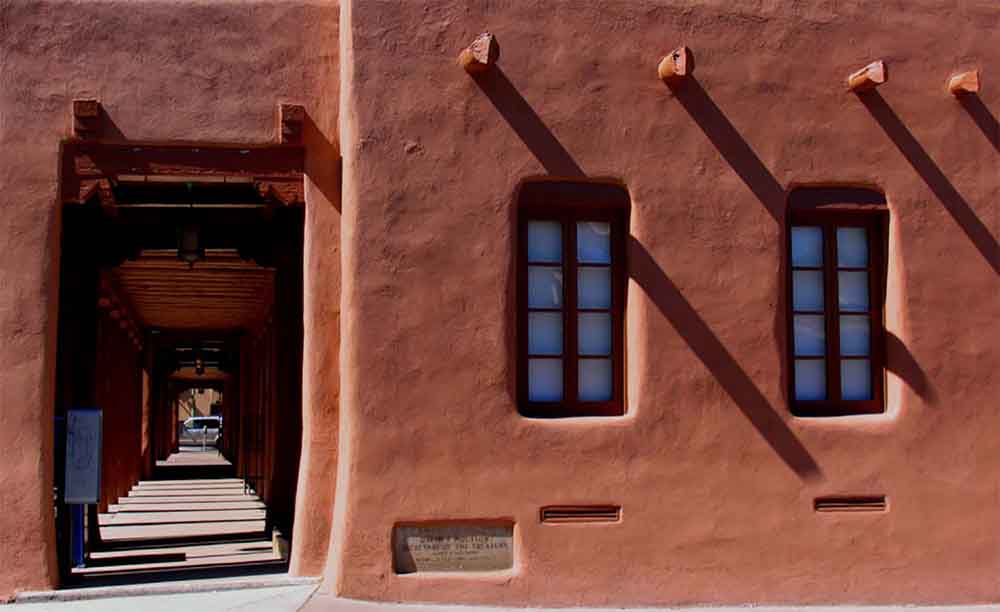
Source: By Karol m from Arizona
Hispanic Culture in New Mexico Today
New Mexico’s culture remains rich with Mexican and Spanish influences still to this day. It can be seen in their architecture, it can be tasted in the food they cook, and it can be heard in the way they speak and the music they play. The New Mexico Spanish dialect, spoken mainly in northern New Mexico, has many facets of the cultures that lived there before. Their vocabulary takes from the 16th- and 17th-century Spanish dialect of the Spanish settlers, the Pueblo languages, and the language of the Aztecs of Mexico. In particular, an ethnic group in New Mexico called the Hispanos of New Mexico speaks this dialect. The Hispanos of New Mexico are direct descendants of the Spanish settlers of Santa Fe and make up a community of over 340,000 people.
Hispanic Culture in New Mexican Architecture
Architecture in New Mexico also shows influences of its Pueblo, Spanish, and Mexican origins. Architects in New Mexico used primarily adobe brick to build their infrastructure. Adobe brick is a strong and durable material made from a mixture of wet mud, clay, and straw that is left out in the sun to dry. When the Spaniards came, they added their own touch to the Pueblo-style adobe homes, such as heavy wooden doors, round walls, covered patios, and vertical posts.
Source: Taos Pueblo in New Mexico. Photo by Wendy Connett

Hispanic Culture in New Mexican Food
New Mexican cuisine combines Native American and Spanish techniques to create their own traditional dishes, like their stacked red chile enchiladas.
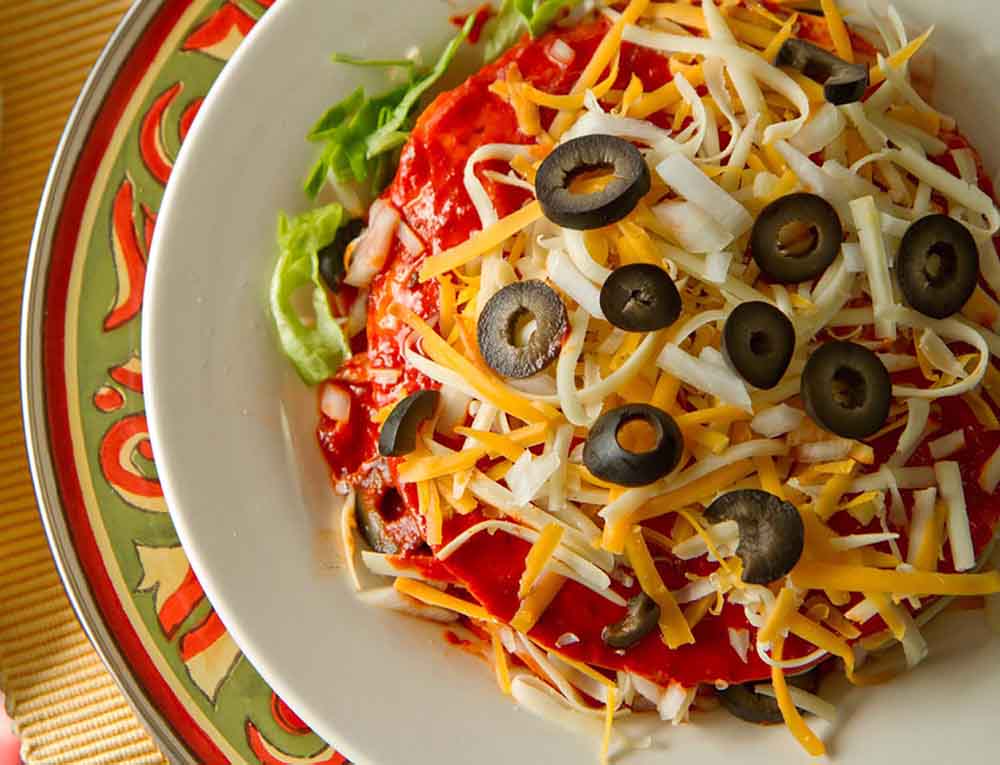
Source: Photo: MJs Kitchen
Red chile is a staple ingredient in New Mexico. They have their own New Mexico chile, grown there by Pueblo and Hispano communities for centuries. With the Spanish settlements came the growth of even more chile throughout the state. Thus, red chile enchiladas are a traditional meal in New Mexico. They even have a unique way of making them – stacked instead of rolled. Try them at an authentic New Mexican restaurant or make them at home with this delicious recipe.
Hispanic Culture in New Mexican Music
Like their language dialect and food dishes, New Mexican music is also a beautiful combination of Mexican and Spanish cultures. The Europeans introduced the Spanish guitar, and Mexican culture introduced Mariachi music, which is still prominent in New Mexico today. If you would like to teach your kids and students New Mexico’s state song, you can find it here to sing along!
Hispanic Culture-Rich Places to Visit With Kids
Whether you’re a teacher, homeschool parent, or family, New Mexico has plenty to offer when it comes to exploring Hispanic culture with children. The New Mexico Historic Sites website has a School Resources page to help quickly and easily plan your trip. They also offer a virtual classroom as well as a virtual summer camp to “explore the culture, nature, and history of New Mexico guided by [their] eight historic sites.”
Also, check out this list of homeschool field trips destinations in New Mexico which lists many fun and educational activities to help teach kids more about New Mexico’s Hispanic culture.
Want to quiz your kids or students on the New Mexican Hispanic culture facts we talked about today? Enter your email address here to have a free printout sent right to your inbox!
Our next trip to Laredo, Texas is already up, so make sure to check it out for more Hispanic culture in America!
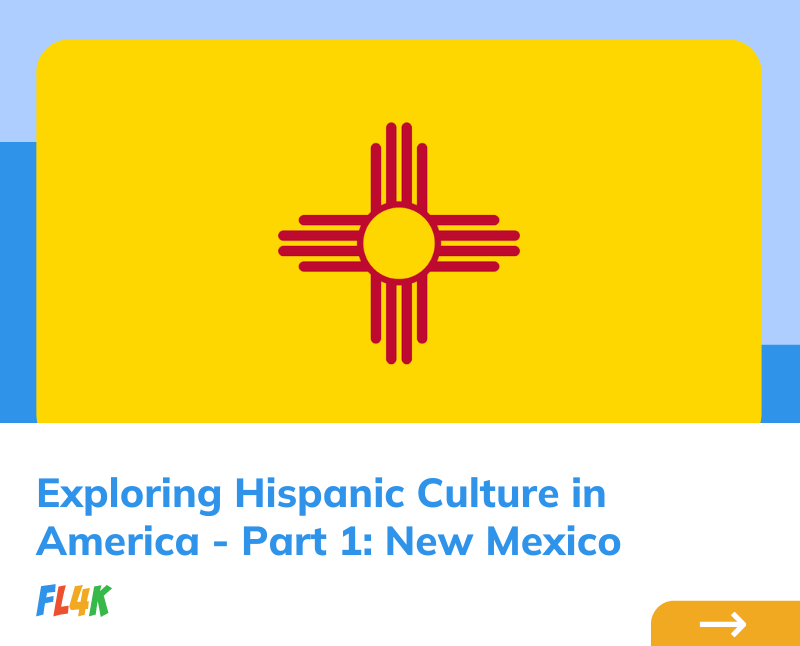
One reply on “Exploring Hispanic Culture in America – Part 1: New Mexico”
I have been absent for some time, but now I remember why I used to love this web site. Thanks , I抣l try and check back more often. How frequently you update your website?